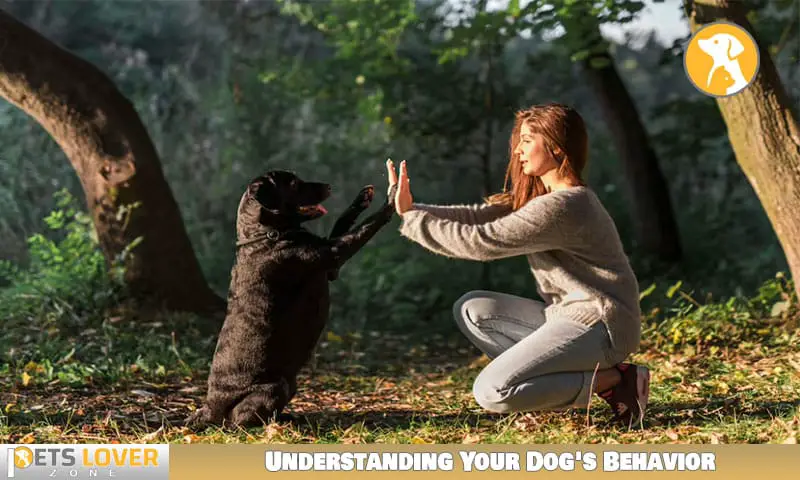To let your dog know you’re mad at them, use a firm tone and body language to communicate your displeasure directly. Now, let’s dive into how you can effectively convey your feelings to your furry friend.
Dogs are highly perceptive to human emotions, so it’s crucial to express your anger in a clear and direct manner. By using a stern voice and assertive body language, such as standing tall and making eye contact, you can convey your displeasure effectively.
However, avoid physical punishment or shouting, as it can cause fear and anxiety in your dog. Remember to maintain consistency in your reactions and provide positive reinforcement when your dog behaves appropriately. Through open communication and understanding, you can foster a healthy bond with your pet.
Understanding Your Dog’s Behavior

Understanding your dog’s behavior is essential for effective communication. By learning to interpret your dog’s body language, you can better gauge their emotions and address any issues that may arise. Pay attention to their tail position, ear movement, and overall body posture.
A lowered tail or flattened ears can indicate fear or submission, while an upright tail and forward ears signify alertness or excitement. Watch for signs of stress such as panting, pacing, or excessive licking. Avoid direct eye contact when your dog is upset, as this can be seen as confrontational.
Instead, give them space and time to calm down. Use positive reinforcement to reward good behavior and redirect negative behavior. Remember, clear and consistent communication helps build a strong bond with your furry friend.
Why It’s Important To Communicate Displeasure

It’s vital to communicate displeasure to your dog to maintain a balanced and respectful relationship. Dogs rely on us to understand their emotions and vocal cues. Express your frustration through your body language and tone of voice. Remain consistent with your reactions to bad behavior.
Use a stern yet calm voice to let your dog know they’ve misbehaved. Avoid physical punishment and instead opt for timeouts or withholding affection temporarily. Reinforce positive behaviors and reward your dog when they respond to your commands. Always remember to remain patient and understanding, as your dog is constantly learning from your reactions.
Communication is key to building a strong bond with your furry friend.
The Do’s And Don’ts Of Communicating With Your Dog
It is important to communicate effectively with your dog when you are upset with them. Physical punishment should always be avoided, as it can lead to negative outcomes. Instead, use positive reinforcement techniques to let your dog know you are mad at them.
For example, you can ignore their unwanted behavior and reward them when they exhibit the desired behavior. Another effective method is to redirect their attention to a different activity or command. Using firm and calm vocal cues can also convey your disappointment without resorting to aggression.
Remember that consistency is key to training your dog, so be patient and persistent in your approach. By following these do’s and don’ts, you can maintain a strong bond with your furry friend while addressing their behavior in a positive and loving manner.
Creating Clear Boundaries
Letting your dog know when they’ve upset you is crucial to establishing clear boundaries. Consistency is key when setting rules and expectations for your furry friend. By staying firm and consistent in your reactions, you can effectively communicate your displeasure.
A short, stern “no” or a timeout in their designated area can help your pet understand their actions were not acceptable. Avoid displaying anger or aggression towards your dog, as it may confuse and frighten them. Instead, use a calm and assertive tone to convey your dissatisfaction.
Remember to redirect their behavior towards more desirable actions and provide positive reinforcement when they respond appropriately. By consistently enforcing boundaries, your dog will learn to recognize and respect your signals when they have crossed a line.
Effective Verbal Communication
Verbal communication plays a crucial role in expressing displeasure to your dog. Dogs are perceptive animals and can pick up on your tone of voice. By using a firm and stern tone, you can effectively convey your dissatisfaction. Keep your sentences brief and concise, allowing for better understanding.
Avoid using a harsh or aggressive tone, as this may intimidate or frighten your dog. Instead, maintain a calm yet firm tone to let them know you are unhappy with their behavior. Remember to be consistent and reinforce your displeasure consistently.
Over time, your dog will learn to associate the tone of your voice with their actions, helping them understand when you are mad at them.
Non-Verbal Cues And Signals
Dogs are highly attuned to non-verbal cues and signals, including our facial expressions and body language. When we’re mad at them, it’s important to communicate our emotions effectively without relying on words. One way to let your dog know you’re upset is by avoiding eye contact and turning away from them.
This signals disapproval without aggressive confrontation. Additionally, you can use a stern facial expression, with a furrowed brow and a serious gaze. Dogs are perceptive to these visual cues and will understand that you’re not pleased. It’s also important to maintain a calm and assertive stance, as body language plays a significant role in communication.
By using these non-verbal cues, you can effectively convey your dissatisfaction to your furry friend without resorting to verbal scolding. Instead, you’ll establish a clear boundary and help them understand your emotions.
Redirecting Behavior
To let your dog know you’re mad at them, redirect their behavior towards appropriate actions. Guide them gently but firmly toward the desired behavior. Use positive reinforcement and rewards to reinforce the right behavior. Avoid scolding or punishing your dog, as this can lead to fear and aggression.
Instead, calmly address the problem behavior and provide an alternative activity or command. Consistency is key, so be patient and persistent in teaching your dog what is acceptable. Keep in mind that dogs respond best to positive reinforcement and clear communication.
By redirecting their behavior and guiding them towards appropriate actions, you can effectively express your displeasure without compromising your bond with your furry friend.
Timeouts And Ignoring Behavior
When you’re upset with your dog, timeouts and ignoring their behavior can be effective communication strategies. Withdrawing attention lets your furry friend know that their actions are not acceptable. Instead of using words, negative body language, such as turning away or crossing your arms, can send a clear message.
By doing this, you’re removing the attention and affection your dog craves, reinforcing that their behavior is not desired. Be consistent and follow through with timeouts when needed. Remember to remain calm and composed during these moments, as dogs can sense your emotions.
Using timeouts and ignoring behavior can help your dog understand boundaries and learn from their mistakes.
Consistency In Communication
Consistency in communication is key when it comes to letting your dog know you’re mad at them. Reinforcing messages through repetition is essential to maintaining clear and effective communication with your furry friend. By consistently using the same cues and signals to convey your displeasure, your dog will be able to understand your emotions better.
It’s important to keep your messages concise and direct, ensuring that each sentence effectively conveys your feelings. Use a firm and assertive tone without resorting to yelling or physical punishment. Remember to be consistent in your actions as well, following through with appropriate consequences when necessary.
By maintaining consistency in your communication, you can foster a deeper understanding and strengthen your bond with your dog.
Seeking Professional Help
Consulting a professional dog trainer or behaviorist is crucial when dealing with challenging behavior. They possess the expertise and experience to guide you through difficult situations and provide effective solutions. Recognizing the right time to seek their help is essential for your dog’s well-being.
If your dog’s behavior escalates or becomes uncontrollable despite your efforts, it may be time to consult a professional. A skilled trainer or behaviorist can analyze the issue and create a tailored plan to address the problem. They will assess your dog’s behavior, identify triggers, and implement training techniques that can help modify their behavior.
With their guidance, you will learn how to communicate with your dog effectively, establish boundaries, and respond appropriately when your furry friend misbehaves. Remember, seeking professional help is a positive step toward fostering a harmonious relationship with your dog.
FAQ
How Do I Let My Dog Know I’m Mad?
To let your dog know you’re mad, use a firm and assertive tone of voice, avoid physical punishment, and maintain eye contact. Offer alternatives to undesirable behavior and reinforce positive behavior.
Can Dogs Sense When You Are Mad?
Dogs can sense when you’re mad due to their heightened sensory abilities. They pick up on changes in your behavior, body language, and voice tone. Their keen sense of smell detects hormonal changes that occur when you’re upset. Your dog’s natural instinct is to respond with empathy and try to comfort you.
Do Dogs Understand When You Scold Them?
Yes, dogs can understand when you scold them. They pick up on your tone and body language and can sense your disapproval.
How Do You Let A Dog Know They Did Something Wrong?
Correcting a dog involves immediate feedback, using a firm tone and body language, and redirecting to the desired behavior.
Conclusion
It’s crucial to handle our anger towards dogs in a constructive and compassionate manner. Instead of resorting to punishments or displaying aggressive behaviors, it’s important to use positive reinforcement techniques to communicate our displeasure to our furry friends. By focusing on redirecting their behavior, setting clear boundaries, and providing consistent training, we can effectively let our dogs know when we are upset with them.
Additionally, understanding and meeting their physical and emotional needs can go a long way toward preventing frustrating situations. Remember, patience, consistency, and love are key elements in maintaining a healthy relationship with our dogs. So let’s be mindful of our reactions, practice empathy, and foster a peaceful and understanding environment for both ourselves and our furry companions.





